Spectro Scientific is proud to present our "Oil Analysis Fundamentals Course" presented in partnership with Noria Corporation. The Oil Analysis Fundamentals course provides comprehensive information regarding lubricant analysis and its critical role in increasing machinery life and uptime.
The online training course is designed to assist reliability professionals in defining oil sample frequencies, proper sampling methodologies and best-practices in equipment retrofitting. In addition to introducing basic oil analysis techniques, reliability professionals will also learn proper contamination control through the introduction of various filtration procedures. As part of achieving overall excellence in oil analysis, lube room storage and management will be introduced as a critical component to keeping lubricants cool, dry and clean prior to being put in-service to maximize equipment performance and extend lubricant life.
The course consists of seven modules, each followed by a quiz that reinforces important points and confirms participant understanding of the material provided. At the end of the course, participants receive a certificate of completion that can be printed or saved to file. Spectro notes that this basic overview of important oil analysis fundamentals is not intended to replace machinery lubrication courses available for certification through the International Council for Machinery Lubrication (ICML).
After course registration, you will receive a username and password for our Learning Portal.
Oil Analysis Fundamentals Course Outline:
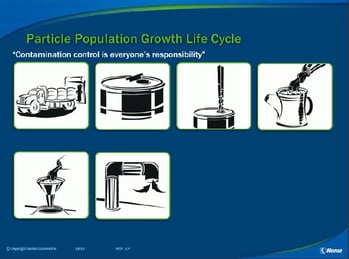
Part 1: Particle Contamination Removal
Introduces techniques for controlling and managing particulate levels in the oil. The following topics will be introduced:
- Sources of particle contamination
- Exclusion versus removal approaches to keep the oil dry and clean.
- Different types of filters and filter media including cartridge filters and desiccant breathers
- The importance of seals and how to select the correct seal for the application
- How to use beta ratios to evaluate filter efficiency
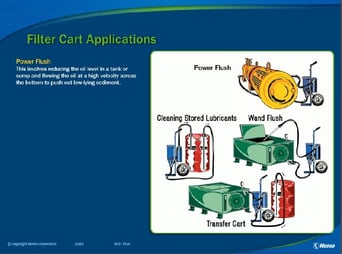
Part 2: Lubricant Filtration
Introduces filtration techniques and managing water ingression in the oil. The following topics will be introduced:
- Sources of water ingression
- Portable filtration techniques
- Filter cart applications
- Engine oil filtration
- Electrostatic filtration
- Oil dehydration by vacuum
- Oil dehydration by coalescence
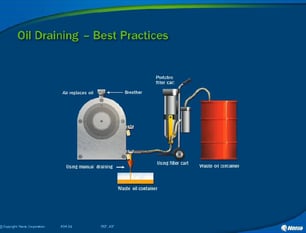
Part 3: Oil Drains, Flushing and Reservoir Management
Introduces best practices of oil drains, flushing and reservoir management. The following topics will be introduced:
- Oil drain scheduling
- Condition based oil changes
- Bleed-and-feed strategy
- Best practices of oil draining and refilling
- Flushing tactics and flushing strategies
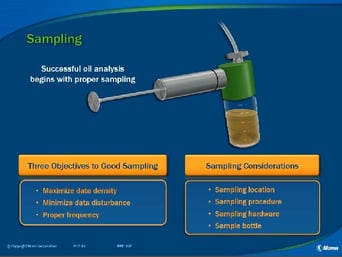
Part 4: Oil Analysis
Introduces the importance of gathering a representative oil sample and its impact on oil analysis results. The following topics will be introduced:
- Types & common applications for oil analysis
- Best Practices in gathering quality, representative oil samples
- Establishing sampling locations & installing hardware/retrofitting equipment
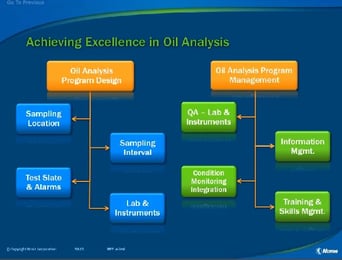
Part 5: Sample Bottle Selection and In-Service Oil Analysis Techniques
Provides an overview of sample bottle selection and in-service oil analysis techniques. The following topics will be introduced:
- Selecting the correct sample bottle for the application
- Sample bottle cleanliness
- Setting alarms & limits to create actionable data
- Review of basic oil analysis tests including acid and base numbers, viscosity and Infrared Spectroscopy (IR)
- Promoting Oil Analysis Excellence within the organization and creating reliability champions
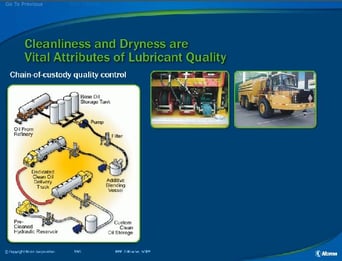
Part 6: Lube Room Management
Provides an overview of lube room management. The following topics will be introduced:
- The importance of keeping the lubricant cool and dry
- Lubricant supply options
- Bulk storage and handling concerns
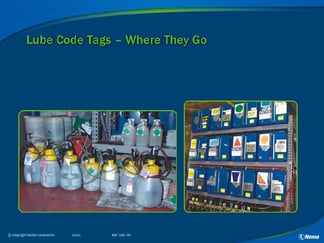
Part 7: Lube Room Safety
Provides an overview of lube room safety including transportation of lubricants and bulk lubricant dispensing techniques. The following topics will be introduced:
- Lubricant dispensing best practices
- Selecting the right containers for transporting lubricants
- Grease storage best practices
- Safety considerations when setting up and managing a lube room
Don't miss out! Click the button below to sign up for the course today!


